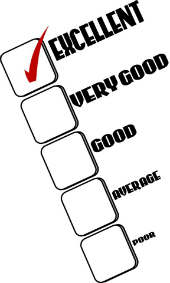Using Images, Video & Rich Media
SEO Guide Step 10
- You must use images and videos
- How rich media can boost your website rankings
- The nitty gritty: what is rich media?
- FAQ: How can I use rich media to improve my website’s SEO?
You Must Use Images and Videos
Images: an image is a visual element that can help with SEO. It can also hurt if not optimized.
Best Image Format: Only use WebP format, and make sure that every <IMG tag has height and width dimensions along with an appropriate and descriptive short ALT attribute. Large images can kill page load times and impact SEO.
Video Is Important: it increases dwell time, it satisfies users, and it is a strong branding activity. We believe that videos will become prominent in search engine result pages in the future, sometimes displacing websites in the rankings. That makes them vital starting now.
And both have a lot of best practices…
In this step of your SEO guide, you’ll learn to enhance your webpages for user engagement — and higher visibility in search engine rankings — using engaging multimedia content.

OK, you’ve chosen your keywords and phrases, optimized your website content for SEO, and submitted your site to search engines. But does your content engage your site visitors?
How visually appealing are your webpages? Reading an all-text page can be as boring as watching paint dry.
Images, video, audio, animations, infographics — these and other types of rich media can take your website from ho-hum to excellent.
Engagement Objects: any non-text element that you can embed on your website to help users connect and engage with your content. And trust us – this is an SEO requirement.
When you combine engagement objects with text, you create multimedia content that helps keep visitors on your website, like bees on blossoms!
The search engines want to provide the most relevant and engaging results to their users. So, including multimedia content on your pages can actually help your website rank higher in search results.
In this lesson, you’ll start thinking of ways to add rich media to your webpages. You’ll also learn about different types of content you can use to improve your website’s SEO visibility in search results for more engaging webpages that are not only search-engine friendly but user-friendly, too.
How Rich Media Can Boost Your Website Rankings
Search engine results pages (SERPs) often present a blend of different types of content, all within a single set of results. Blended results may include webpages, images, news, shopping, and more.
Remember that the search engines want to serve their “customer” (the searcher) the most satisfying set of results possible. It makes sense that they would present a buffet of different result types, especially when the searcher’s intent is unclear.
Incorporating multimedia items into your content makes your webpages more appealing to engines and searchers alike. It may also make them more competitive against other pages that are less multimedia-rich and engaging — so this can boost your SEO.
In addition, your rich media content elements can rank in the vertical search engines. When people want to limit their search to just one type of result, they can choose one of the specialty vertical search engines highlighted below:


For example, hosting videos on your site gives you a chance to be found in web searches AND video searches. Similarly, a fancy infographic could boost your web search visibility AND rank on its own in image search. This opens an entirely new arena where you can be found by people searching specifically for these types of content.
When you have content types showing up in blended web search results as well as specialty search engines, you basically have more hooks in the water to catch web traffic with — and that’s good for SEO and the bottom line.
How’s Your Site’s Rich Media Experience?
Do a quick search on a keyword or phrase you would like to rank for and visit the websites of your top three to five SERP competitors.
What kinds of engaging elements are being used (or not used) on their websites?
Do you see ways to enhance your marketing strategy using multimedia content elements you can see, hear and/or click? Without these engagement objects, your site may not rank as high as competitors who do have them.
The most engaging websites:
- Make use of original rich media elements
- Are seen as higher-quality
- Have more opportunities to rank in SERPs as a result.
Adding rich media to your web pages and creating multimedia content are important parts of the SEO process and should not be overlooked.
Once you’ve identified ways to enhance your website with engagement objects, be sure to optimize them for your keywords and phrases, just as you would any other piece of content (more on that in the next lesson!). Now, let’s look at the different types of content that are most commonly used to engage website visitors and improve user experience.
The Nitty Gritty: What is Rich Media?

There are many types of content you can add to your webpages to help improve the visibility of your website in SERPs.
Rich media includes any content elements you can see, hear, or click. You might use videos, images, audio, maps, charts, infographics, and many more. Any of these make tasty garnishes to complement your main course of text on any given webpage.
Videos and images are among the most commonly used forms of engagement objects that have made their way to the top of SERPs.
Just to whet your appetite, here are nine types of rich media elements you can use to increase engagement and conversions on your website:
- Videos
- Photos and other images
- Audio clips and podcasts
- Slide presentations
- Infographics
- GIF animations
- Polls and quizzes
- Maps
- Graphs and charts
With so many choices of rich media objects that could engage new and returning visitors, you probably have some creative ideas bouncing around. The next step in the SEO guide explains each type in more depth, and teaches you how to use and optimize rich media to create multimedia content that will serve users and help you rank higher in search results.
Need more SEO tips?
See more on Blended Search
Related blog posts and articles:
- Make an Online Photo Engaging: Tools and Rules to Help Edit Images
- Create an Infographic for Free (Seriously)
- How to Make a Graphic-Text Mash-up to Promote Content
FAQ: How can I use rich media to improve my website’s SEO?
Optimizing your website for search engines is crucial to ensure your online presence remains strong and competitive. One potent tool in your SEO arsenal is the strategic use of rich media, including images, videos, infographics, and interactive content.
The Rich Media Revolution
Rich media is a multifaceted approach that captivates your audience with visually appealing and engaging content. Search engines like Google favor websites offering a rich user experience, making incorporating these elements into your strategy imperative. When used judiciously, rich media can significantly boost your SEO ranking.
Quality Over Quantity
Remember, search engines prioritize quality content over quantity. Rather than inundating your site with media, focus on relevance. Ensure that images, videos, or other media align with your content, conveying a clear message to your audience and search engine crawlers. Use descriptive file names and alt tags to make your media easily discoverable by search engines, enhancing your SEO.
Page Load Speed Matters
While rich media can enhance user engagement, it can also slow down your website’s loading speed. Slow websites are penalized by search engines. Optimize your rich media files to balance quality and load time. Compress images and videos without sacrificing quality and leverage browser caching to expedite load times, ensuring a seamless user experience.
Rich Snippets for Rich Media
To further leverage rich media, consider implementing rich snippets, which are structured data markup that provides search engines with additional information about your content. Rich snippets can result in eye-catching search results, increasing click-through rates and improving your website’s SEO visibility.
Stay Current and Adaptive
Finally, stay abreast of SEO trends and algorithm updates. The digital landscape evolves rapidly, and your SEO strategy must evolve. Continuously analyze your rich media’s impact on SEO performance, and be prepared to adapt your approach as needed.
Incorporating rich media into your SEO strategy is a potent way to improve your website’s search engine ranking and engage your audience effectively. When done right, it can set your website apart from the competition, ensuring sustained online success.
Step-by-Step Procedure: Enhancing SEO with Rich Media
- Assess your website content and identify opportunities for incorporating rich media.
- Determine your target audience and tailor your rich media strategy to their preferences.
- Select high-quality, relevant images, videos, infographics, or interactive content that complements your web pages.
- Optimize rich media files by compressing images and videos without compromising quality.
- Implement descriptive file names and alt tags for all media elements.
- Use browser caching and content delivery networks to ensure fast page load times.
- Create structured data markup (rich snippets) for your rich media content.
- Monitor your website’s loading speed and overall performance using tools like Google PageSpeed Insights.
- Regularly update your rich media content to keep it fresh and engaging.
- Analyze your SEO performance using tools like Google Analytics and Search Console.
- Identify which rich media elements contribute most to your SEO success.
- Research and adapt to the latest SEO trends and algorithm changes.
- Stay informed about industry-specific keywords and phrases to improve search visibility.
- Develop a content calendar to produce and update rich media consistently.
- Try different rich media formats and observe which works best for your audience.
- encourage user-generated content such as testimonials and reviews to enhance SEO.
- Engage with your audience through social media channels to promote rich content.
- Build backlinks to your website by collaborating with influencers and industry partners.
- Monitor and respond to user comments and feedback to foster community.
- Continuously evaluate the effectiveness of your rich media strategy and make adjustments as needed to achieve optimal SEO results.


